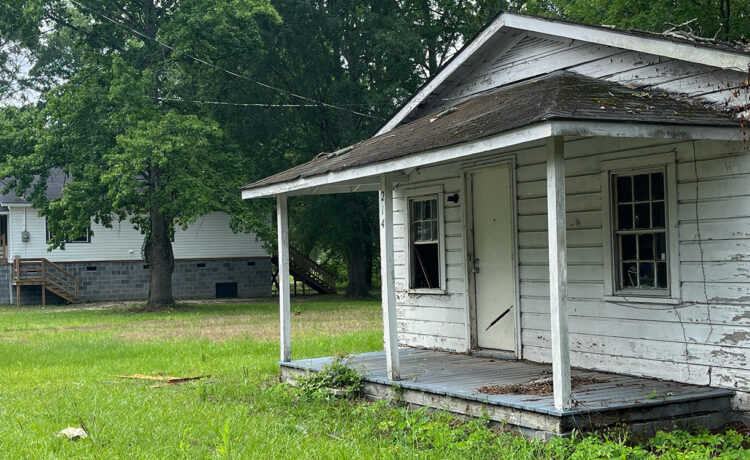Disaster Housing Recovery Planning
Disasters often affect the housing stock of a community. Housing units from single-family homes to multifamily complexes may be destroyed or made uninhabitable for an extended period of time, leaving many residents in need of interim housing as well as long-term housing options.
Housing is a basic need for post-disaster resettlement to help residents recover and bring a form of normalcy to their lives. Re-establishing housing is one of the first steps to begin the road to long-term recovery.
Many funding opportunities open during disaster recovery that can support housing. Having pre-prepared “Disaster Housing Recovery Plans” will aid community leaders in taking advantage of these opportunities.
Why Disaster Housing Recovery Plans Are Important
Disaster Housing Recovery Plans provide several benefits to communities, just as other emergency management and community development plans do.
These plans:
- Allow local officials and communities to better manage housing recovery activities in the aftermath of a major disaster or emergency
- Coordinate housing rebuilding with other community plans and goals such as economic development or hazard mitigation
- Support households that have trouble rebuilding on their own, especially those living in affordable housing and workforce housing that research has shown are slower to return post-disaster
- Support faster household return to the community, which has ripple effects into the economic and social life of the community
- Support faster housing repair and reconstruction, which gets the property tax base of a community back quickly
- Allow for public engagement and education around structure mitigation and insurance options that will improve community resilience over time
These plans support communities to recover more quickly post-disaster as well as rebuild in ways that can reduce future disaster risks.
Texas Senate Bill 289, 86th Legislature, 2019
In 2019, the 86th Texas Legislature passed Senate Bill 289. Broadly, this bill tasked the Hazard Reduction & Recovery Center (HRRC) at Texas A&M University and the Texas General Land Office (TXGLO) to develop a process to coordinate the review of housing recovery plans developed by local (municipal or county) governments.
In response to this directive, the HRRC drafted the Disaster Housing Recovery Plan Evaluation Tool and Guidebook with feedback from the TXGLO and experts with experience in housing recovery processes.
This website overviews the Disaster Housing Recovery Plan Evaluation Tool and Guidebook and provides links to these materials for public use.
The Evaluation Tool for Disaster Housing Recovery Plans
The overarching goal of The Disaster Housing Recovery Plan Evaluation Tool is to improve housing recovery planning throughout the state of Texas and beyond. It provides insights into promising practices learned from communities across the state and country that have experienced disaster.
The Tool provides an assessment of whether and to what extent the plan addresses important topics that have been shown to improve effective, efficient, and inclusive housing recovery after a disaster caused by a natural, technological, or human-caused hazard.
The Tool is based on a set of values drawn from existing research and policy recommendations of promising practices in disaster housing.
Guiding Principles of Housing Recovery
- Address vulnerable populations
- Affirm resident choice
- Promote resilience
- Streamline return to permanent housing
- Foster inclusive participation in recovery planning and processes
- Build and promote local capacity in local businesses, nonprofits, and leaders
- Use resources responsibly
- Communicate transparently
How to Use the Tool
There are two ways to use the Tool.
1. The Tool can be used after a Housing Recovery Plan is drafted by the HRRC to evaluate the plan. Feedback from the HRRC will include areas where the Plan could be changed and improved.
2. The Tool and its Guidebook could be used during plan development to provide guidance on topics to consider and include.
Because Housing Recovery Planning is a new area for many communities, the Tool is divided into 3 levels based on community experience and capacity. Each level has an accompanying Guidebook to support its use. The Guidebooks provide background information on each assessment item in the Tools including: key definitions, justification for the item’s inclusion in the Tool, and additional resources to learn more.
Basic Tool
The Basic version includes the foundational items that a disaster housing recovery plan should contain, and is tailored for those communities with limited time or staff capacity to undertake a large planning process.
Intermediate Tool
The Intermediate version contains more items than the basic. It is designed for communities with time and staff capacity to undertake planning, but who may not be familiar with disaster or housing planning.
Advanced Tool
The Advanced version possesses the full Tool with all items. This version is designed for communities with experience in housing recovery and are aiming to improve their planning processes.
Questions and Support
To learn more, request a meeting with us before starting the housing recovery process to understand how to use the Tool to guide the planning process.
Depending on your needs and our availability, the HRRC can discuss possibilities for our staff, faculty, or students to support your disaster housing recovery planning process or complete the evaluation of your finalized disaster housing recovery plan.
Contact
hrrc@arch.tamu.edu
979-845-7813, ask for Dr. Michelle Meyer or Dr. Shannon Van Zandt

